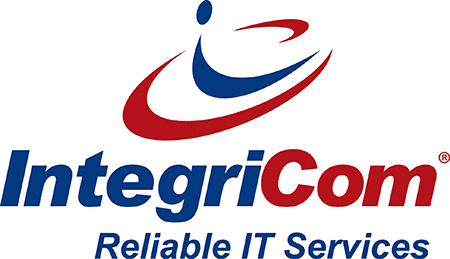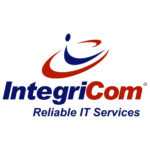Seamlessly moving business operations to the cloud requires careful planning, the right tools, and experienced guidance. Many organizations face challenges such as downtime risks, data security concerns, and integration complexities during this transition. Leveraging external expertise can help overcome these obstacles while ensuring efficiency and compliance. By reducing strain on internal teams, businesses can focus on core objectives without disruption. In this blog, we’ll explore how outsourcing cloud migration delivers a smoother, more efficient, and successful transition.
Key Takeaways
- Outsourcing cloud migration allows businesses to leverage specialized IT expertise at lower costs, freeing internal resources for strategic growth.
- The cloud migration process is structured into three main phases: Assessment and Planning, Execution and Data Transfer, and Post-Migration Support, ensuring a seamless transition.
- Choosing the right outsourced IT service provider is critical, emphasizing the importance of their expertise, customization ability, and comprehensive security measures.
Advantages of Outsourcing Cloud Migration

Outsourcing cloud migration enables small and medium-sized businesses to tap into the expertise of dedicated IT teams at lower costs, freeing up internal resources for core operations. Without the burden of technical complexities, businesses can concentrate on strategic growth. This advantage is just one of many that outsourcing offers.
Access to specialized knowledge without the overhead of managing an in-house IT team is another significant advantage. Cloud migration service providers ensure a smooth transition of digital and IT assets to the cloud, enhancing operational efficiency during the migration process. This expertise can be the difference between a seamless migration process and a disruptive one. Businesses exploring the benefits should also understand why companies outsource IT services, as cloud migration is often part of a broader strategy to reduce costs, improve efficiency, and access specialized expertise.
But the benefits don’t stop there. Outsourcing cloud migration guarantees higher service quality due to the specialized skills and advanced technologies employed by service providers. Their deep understanding of cloud solutions, environments, and resources ensures your migration project is handled with precision and care.
Detailed Phases of Cloud Migration with Outsourced IT Services
Embarking on a cloud migration journey involves several clearly defined phases, each crucial for a seamless transition. Cloud migration service providers guide businesses through the entire migration process, from assessment and planning to execution and post-migration support. This structured approach ensures that every aspect of the migration is meticulously planned and executed.
The phases of cloud migration with outsourced IT services can be broken down into three main stages: Assessment and Planning, Execution and Data Transfer, and Post-Migration Support and Optimization. Each stage plays a vital role in ensuring a successful migration and maximizing the benefits of cloud adoption. Let’s delve into the details of each phase.
Assessment and Planning
Assessment and Planning is the initial stage of cloud migration. This phase involves designing a customized migration plan that aligns with operational goals, including a thorough assessment of current IT systems such as infrastructure, servers, networks, and software. Understanding these components ensures a smooth transition to cloud systems.
Aligning technical and business strategies is crucial in this phase. Involving IT, finance, operations, and compliance teams ensures the cloud strategy supports business goals and expectations, preventing unnecessary disruptions and considering all aspects of the migration.
Tools provide detailed assessments to assist in making informed decisions about migration strategies. A comprehensive inventory of current systems is essential for an effective cloud migration assessment, enabling a phased rollout approach for a smoother transition of applications and workloads.
Execution and Data Transfer
The Execution and Data Transfer phase involves the actual migration, transferring all necessary data and applications to new cloud environments. The entire process can lead to mistakes that may cause data loss or significant downtime, emphasizing the need for careful planning and execution.
Data and applications are systematically moved in well-planned stages to avoid disruption during the migration process. This staggered approach ensures that business operations continue smoothly during the transition.
Careful timing of data migration and system upgrades minimizes business disruption. Rapid execution with data integrity prevents errors that could jeopardize data and systems. Following best practices ensures a successful transition to the cloud.
Post-Migration Support and Optimization
Post-Migration Support and Optimization is the final phase of the cloud migration process. This phase ensures that migrated systems function optimally and continue to meet business needs. Outsourced providers offer comprehensive management, from provisioning resources to performance monitoring.
Post-migration support encompasses system monitoring tools, performance optimization, ongoing maintenance, and routine updates as part of an ongoing process. Continuous monitoring identifies potential issues early, making it a valuable part of the strategy. Tracking performance against benchmarks set during planning is essential for optimization.
Real-world examples, such as DEF Corp seeing a 20% boost in productivity and GHI Services improving user satisfaction scores by 30%, highlight the tangible benefits of comprehensive post-migration support. These success stories underscore the importance of post-migration validation and optimization.
Key Factors Influencing the Success of Outsourced Cloud Migration

Several factors influence the success of outsourced cloud migration:
- Project scope and complexity, including the number of systems and interdependencies, significantly impact the time and resources required.
- Outsourced migration services alleviate the burden on in-house IT teams.
- This allows strategic use of internal resources.
Selecting the right cloud migration service provider is crucial for a successful migration. Factors such as expertise, customization, and security measures play significant roles in overall success.
Expertise and Experience
Selecting providers with a strong track record enhances the migration experience by minimizing potential errors. A solid track record is often linked to more successful and streamlined migration processes, reducing the likelihood of costly mistakes.
Industry familiarity aids in compliance and best practices, making it essential to choose providers with relevant external expertise. A combination of a strong track record and industry experience equips providers to handle the complexities of cloud migration effectively.
Customization and Flexibility
A tailored migration strategy addresses specific business requirements, leading to better outcomes. Flexible resource allocation in outsourcing enables quick responses to market demands. A well-planned migration also takes into account scalability in cloud computing, ensuring that your cloud infrastructure can grow or contract seamlessly based on evolving business demands.
Initial expenditures for cloud migration often cover planning and training, but these can lead to long-term savings by reducing operational expenses and improving cost effectiveness, despite requiring significant upfront investments. Understanding how tailored strategies and flexibility enhance migration outcomes is crucial for successful cloud transitions.
Comprehensive Security Measures
Data security is a major concern during cloud migration. Measures such as enhanced security, robust security measures, encrypted transfers, strict identity controls, and endpoint security are vital to protect data.
Cloud migration services implement advanced security protocols to safeguard sensitive data during transit and storage, utilizing cloud resources effectively and optimizing cloud usage. A cloud provider offering managed services provides robust security features to protect against potential threats in cloud computing.
Cost Considerations in Outsourced Cloud Migration

Understanding cloud migration costs is essential for effective budgeting and optimizing ROI. Key factors influencing costs include:
- Project scale and complexity
- Resource requirements
- Provider selection
Pricing variations among cloud providers arise from the specific services offered. Understanding the drivers of cloud migration costs is crucial to prepare and avoid unexpected expenses.
Outsourcing cloud migration enables organizations to predict costs better, facilitating effective budget planning and minimizing financial surprises.
Initial Investment vs. Long-Term Savings
Outsourcing cloud migration can lead to greater efficiency and cost savings. While upfront investments in strategic planning and cloud architecture may be significant, long-term savings through reduced operational expenses and improved productivity often outweigh these costs. Managed cloud services enhance productivity, security, and collaboration and offer cost-effective, flexible, and scalable data storage solutions.
Partnering with an experienced cloud migration service provider helps businesses avoid integration issues, ensure compliance, and benefit from adaptable solutions, enhancing long-term operational efficiency. The returns on investment can be substantial, particularly for smaller organizations that might find managing the process in-house more challenging and costly.
How Outsourcing Enhances Innovation During Cloud Migration

Outsourced cloud migration enhances innovation by providing access to specialized skills, cloud technology, and advanced technologies without significant investment. This access allows companies to allocate more resources towards research and development, fostering a culture of innovation and continuous improvement.
Leveraging expert insights during cloud migration facilitates informed decision-making and maximizes the value of cloud investments. Outsourcing enables businesses to adopt cutting-edge cloud solutions and services that drive increased productivity and business continuity.
Selecting the Right Outsourced IT Service Provider for Cloud Migration
Choosing the right service provider is crucial for successful cloud migration. Factors that significantly influence the selection process include:
- Industry specialization
- Credentials
- Client references
- Customized solutions
- Contractual clarity
- Communication
- Compliance
A systematic approach to researching and selecting a provider ensures better outcomes.
Outsource Solutions Group, with over 20 years of experience in cloud migration services, exemplifies a reliable provider. Key aspects to consider when selecting a cloud migration service provider include credentials, references, and communication.
Evaluating Credentials and Certifications
Cloud migration partners should hold certifications such as Google Cloud Professional Cloud Architect. Affiliations with organizations like the Cloud Security Alliance and the International Organization for Standardization ensure quality and compliance during migration.
Verifying your cloud migration service provider’s qualifications fosters trust and ensures migration efforts are handled by experienced and certified professionals. This process is essential for ensuring adherence to industry standards and best practices.
Seeking References and Case Studies
Requesting client references or case studies gauges a provider’s reliability and effectiveness. Reviewing past client case studies provides valuable insights into the provider’s ability to deliver successful cloud migrations and meet expectations.
Analyzing case studies helps potential clients understand the results they can expect from the provider. Actively seeking and reviewing these references is crucial for making informed decisions when selecting an outsourced IT service provider.
Assessing Communication and Transparency
Clear communication enhances trust and ensures smoother operations between clients and service providers. Expert guidance and consistent communication are critical for a successful migration, ensuring all parties are aligned and informed.
An effective migration partner should outline their process clearly and be open to discussing critical aspects such as data security and timelines. This transparency builds a strong partnership and facilitates a seamless migration.
Ensuring a Seamless Cloud Migration Experience
A smooth cloud migration requires a balance of strategic planning, technical precision, and operational support. Partnering with experts who understand the complexities of cloud environments can significantly optimize resources and ensure minimal disruption. By leveraging specialized skills and proven methodologies, businesses can transition confidently, maintaining performance and security throughout the process.
At IntegriCom, we deliver tailored outsourced IT services in Atlanta designed to make your cloud migration efficient, secure, and aligned with your operational goals. Our team works alongside you to handle the technical heavy lifting while you focus on driving business growth. Let us help you streamline your move to the cloud and set the stage for long-term success.
Frequently Asked Questions
What is cloud migration?
Cloud migration is the process of moving data, applications, and IT resources from on-premises infrastructure to a cloud-based environment or from one cloud platform to another. This transition often aims to improve scalability, flexibility, and cost efficiency.
How long does a typical cloud migration take?
The duration depends on factors such as project complexity, data volume, system dependencies, and the migration strategy used. While small projects may take a few weeks, larger and more complex migrations can extend over several months.
Can all business applications be migrated to the cloud?
Not all applications are cloud-compatible without adjustments. Some legacy systems may require modifications, upgrades, or replacements to function efficiently in a cloud environment. A thorough assessment determines which applications are suitable for migration.
What’s the difference between public, private, and hybrid cloud?
A public cloud is hosted by third-party providers and shared among multiple users. A private cloud is dedicated to a single organization, offering more control and security. A hybrid cloud combines both, allowing businesses to leverage the benefits of each model.


